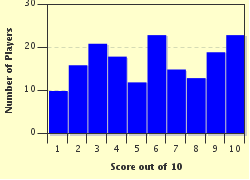Quiz Answer Key and Fun Facts
1. Carbon (pictured left) has four electrons in its outermost shell. Because carbon obeys the octet rule, it usually forms four covalent bonds (pictured right). Which of the following best describes the octet rule?
2. A single covalent bond contains two electrons, which are described as a bonding pair. These are denoted by a line between the atoms. Atoms may also have pairs of electrons that are not involved in bonding, and which are represented by two dots. What are these called?
3. While electrons "like" to pair up, each pair repels other pairs (since they are all negatively charged), meaning that electron pairs exist as far away from each other as possible in 3D space. This results in distinct molecular shapes and bond angles, depending on the number and type of electron pairs about the central atom. What name is given to the theory which describes this phenomenon?
4. Diagrammatic representations of molecules often take into account that these molecules are 3D rather than 2D, which is important when considering molecular shape and bond angles. While straight lines represent covalent bonds in the plane of the screen, which of the following best describes the other bonds?
5. Carbon dioxide (pictured) involves a central carbon bonded to two oxygen atoms. Bearing in mind that there are no electrons about the carbon atom that are not involved in covalent bonds, what is the bond angle of carbon dioxide?
6. As seen in the picture, boron trifluoride involves three bonding pairs of electrons about the central boron atom, and no lone pairs. The bonds are all in plane with the screen and repel each other equally to give a bond angle of 120 degrees. What is this molecular shape known as?
7. Methane (pictured), as we have already seen, is four peripheral hydrogen atoms about a central carbon atom. The bond angle in methane is 109.5 degrees. What geometrical name is given to this molecular shape?
8. 1) Methane has four bonding pairs of electrons and has a bond angle of 109.5 degrees.
2) Unbound electron pairs (the two dots) repel bonding pairs more strongly than bonding pairs repel one another.
Bearing these two statements in mind, what can you deduce about the bond angle between any two N-H bonds in ammonia (pictured)?
9. Sulphur hexafluoride (pictured) is a central sulphur atom bonded to six peripheral fluorine atoms. The bond angle in this molecule (and similar molecules) is 90 degrees. The bonds here define the vertices of a specific 3D shape, which lends its name to this molecular shape. Which shape is this?
10. Water has a different molecular shape than any molecule discussed so far. It has two bonding pairs of electrons about the oxygen atom, and two electron pairs that are not involved in covalent bonds. Which of the following is used to describe the molecular shape of water?
Source: Author
doublemm
This quiz was reviewed by FunTrivia editor
rossian before going online.
Any errors found in FunTrivia content are routinely corrected through our feedback system.

